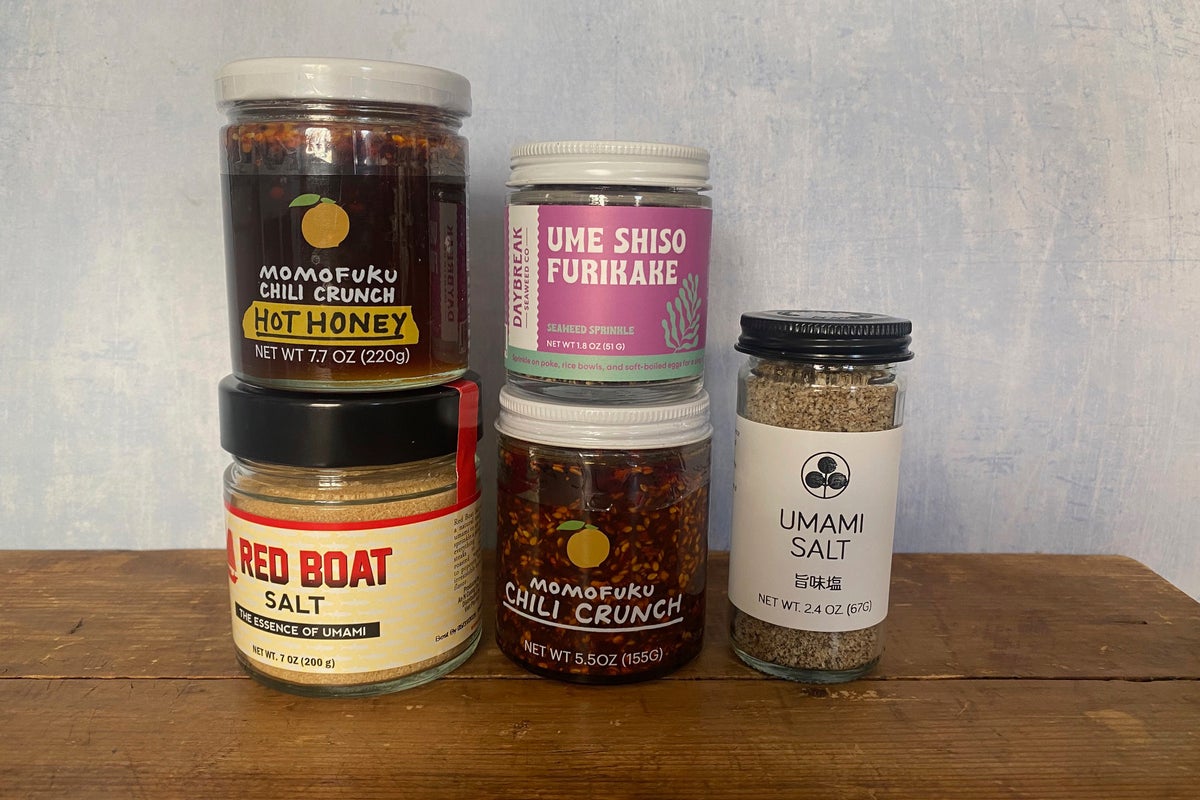Have you ever had that moment when you take a bite of specific savory dishes like meat, fish, mushrooms, or miso, and suddenly think “Wow, this is incredibly tasty!”? Chances are, what you’re experiencing is umami.
Umami, which translates to “delicious savory taste, ” was identified as a distinct flavor in 1908 by
Japanese
Chemist Kikunae Ikeda discovered umami, which is now acknowledged as the fifth taste, alongside sweet, salty, bitter, and sour.
The idea behind this fifth flavor has been welcomed in various culinary circles.
East
For quite some time, even before it was officially named, this concept has existed. However, it remains a fairly novel notion for numerous home chefs in the Western world.
If you’ve often pondered why adding Parmesan cheese to your pasta elevates the experience, what gives roast pork shoulder such remarkable taste on the outside, how miso soup achieves its rich flavor profile, what makes bacon irresistibly tasty, or why an anchovy-filled Caesar salad dressing sends you into culinary bliss, as well as why caramelized onions possess such complexity—the secret lies in umami.
The umami taste originates from glutamate, an abundant amino acid and component of proteins present in numerous edibles. A well-known form is monosodium glutamate, commonly referred to as MSG. Within the United States, there was formerly a belief that MSG posed health risks; however, it is currently widely accepted as a harmless ingredient for culinary use. Numerous Asian cooks have endeavored to reincorporate MSG back into regular meal preparation.
Umami is present in numerous components across various culinary traditions.
Umami-rich foods encompass:
Matured cheeses like blue cheese, Gouda, and Cheddar stand out for their high umami content because of the protein degradation that occurs during the aging process. Parmesan cheese is famously known as a powerhouse of umami flavors.
Tomato-based items: As they get reduced through cooking, their savory flavor becomes more intense — consider tomato paste, sun-dried tomatoes, and ketchup.
Specifically, consider using shiitake, oyster, and portobello mushrooms. Additionally, incorporate dried mushrooms into your recipe.
Meat
And savoury broths: Examples of Umami-richness include roasted and grilled meats such as a roasted chicken or pan-seared steak. Meats like cured prosciutto and bacon also pack a punch of Umami flavour. Additionally, dishes containing robustly flavoured broths, such as ramen, udon soup, and similar cuisine, fall into this category too.
Fish
And seafood: Particularly types such as sea urchin, shrimp, and scallops. Additionally, you’ll encounter significant umami flavors in fish and fish broth, notably from small fatty fishes like sardines and anchovies.
Bonito flakes serve as the foundation for dashi, an essential component in many Japanese dishes. Made from delicate, crispy pieces of smoked and dried bonito tuna, this ingredient combines with shiitake mushrooms and kombu (a type of seaweed) to create the flavorful broth known as dashi.
A lot of fermented items possess an umami flavor.
Soy sauce, also known as shoyu, stands out as one of the cornerstones of umami taste in Asian cuisine. During fermentation, the proteins from the soybeans and wheat in soy sauce transform into various amino acids, with glutamic acid being notably prominent. There’s also tamari, which is essentially a gluten-free variant of this seasoning.
Fish sauce provides an umami flavor, commonly utilized in Southeast Asian cuisine. Its primary components include anchovies and salt. When mixed together, the salt extracts moisture from the fish, resulting in a rich, strong amber-colored sauce. It’s this ingredient that contributes significantly to making Thai, Vietnamese, and Filipino dishes notably robust and savoury, among others.
Non-meat options
Vegetarians and vegans may believe that achieving the mysterious fifth taste is challenging without incorporating meats or other animal-derived ingredients; however, there is plenty of encouraging information available!
Seaweed: A major contributor to umami flavors (and notably the second key component in dashi).
Yeasts for enhancement and spread applications: Umami stands out as the primary taste in both Marmite and nutritional yeasts.
Miso paste, derived from fermented soybeans, boasts a rich umami flavor regardless of whether you opt for white miso, brown rice miso, red miso, or yellow miso.
Several of numerous intriguing accents from the storeroom…
Umami Mart, an online store, offers an umami salt blend consisting of salt, black ingredients, garlic, and shiitake mushrooms.
Red Boat produces top-notch fish sauce and also offers a seasoned salt crafted from anchovies, providing a potent flavor boost in a dry form.
The beloved Kewpie Mayonnaise boasts an umami-rich flavor due to the combination of egg yolks, vinegar, and MSG.
Cabi produces an umami dashi soy sauce that delivers a robust umami flavor.
Muso, a company, produces organic umami purees made from soy sauce and koji-fermented rice, aimed at enhancing flavors and softening food textures.
Yamaki produces dashi sachets along with different-sized packets of bonito flakes.
Kayanoya is a Japanese company recognized for its range of dashi items, which include dashi powder, kelp, and mushroom stock powders as well as premixed ramen and udon broths.
Vumami offers a range of seasonings known as Umami Bombs, which include ingredients like fermented soybeans, tamari, and shiitake mushrooms. These can enhance your stir-fries or soups, and also serve well as a dipping sauce for dumplings.
Now that you’re aware of what you’re savoring, you’ll start seeking opportunities to include more of these fifth dates in your cuisine. It’s really just about knowing which ingredients to grab!
___
Katie Workman frequently contributes articles about cuisine to The Associated Press. She has authored two cookbooks aimed at family-oriented meals: “Dinner Solved!” and “The Mom 100 Cookbook.” Additionally, she maintains a blog on this topic.
. She can be reached at Katie@themom100.com.
___
To read additional AP food articles, visit this link.
https://apnews.com/hub/recipes
.
Whether it’s news, politics, travel, sports, culture, or climate – The Independent offers a variety of free newsletters tailored to your preferences. To get the stories you’re interested in delivered directly to your inbox along with additional content, simply click.
here
.
